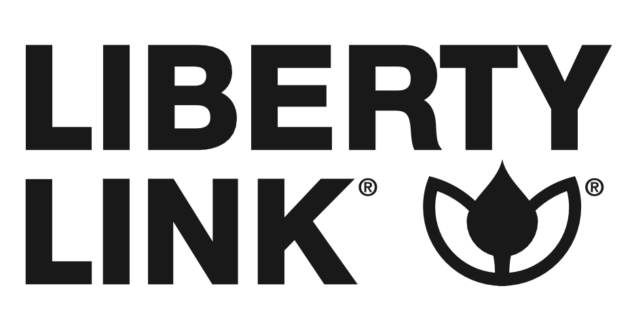
Brought to you by Bayer Crop Science and DEKALB Seed
Mastering soybean weed control
April 15, 2024 in News
Stubborn and persistent weeds like Canada fleabane can severely damage a soybean crop, impacting yields and bottom lines. Fortunately, soybean growers have a variety of tools to combat Canada fleabane and other challenging weeds like waterhemp, and the industry is constantly working toward research and development of new products and solutions.
In a recent webinar, hosted by Top Crop Manager and presented by Bayer Crop Science and DEKALB seed, Kurtis Pilkington, Technical Solutions Agronomist and Tyler Sabelli, Agronomic Solutions Advisor, detailed how the Roundup Ready® Xtend Crop System helps growers tackle Canada fleabane and other tough-to-manage weeds while maximizing yield potential.
Understanding the system
The Roundup Ready Xtend Crop System comprises two trait platforms: Roundup Ready 2 Xtend® soybeans and XtendFlex® soybeans. Roundup Ready 2 Xtend soybeans are tolerant to Group 9 glyphosate (also known as Roundup WeatherMAX® herbicide) and Group 4 dicamba (or XtendiMax® 2 herbicide with VaporGrip® Technology), providing effective control over a wide range of weeds, including glyphosate-resistant biotypes. XtendFlex soybeans enhance the Roundup Ready Xtend System by adding Group 10 glufosinate resistance, offering additional herbicide tolerance. This brings another mode of action to the table, Pilkington says, especially when targeting tough-to-control in-season weeds.
“XtendFlex soybeans offer some key advantages,” notes Sabelli. “With early season residual activity from dicamba, growers are seeing superior control on challenging weeds, such as Canada fleabane.”
The system also includes two chemistry options: XtendiMax 2 contains dicamba, a Group 4 active ingredient to be used with the Roundup Ready Xtend Crop System, and Roundup Xtend 2 herbicide with VaporGrip Technology, a pre-mixed formulation of dicamba and glyphosate, designed to optimize results with the Roundup Ready Xtend Crop System.
Optimal application strategies
Early application of dicamba within the pre-emergence to V2 stage is crucial for maximizing weed control and ensuring a weed-free period during critical crop growth stages.
“Roundup Xtend 2 herbicide with VaporGrip Technology, XtendiMax 2 herbicide with VaporGrip Technology, any straight Roundup products or glufosinate can be applied at VE all the way to R1,” Pilkington says. “Roundup also extends a little further with full bloom or R2 timing.”
Pilkington notes there are two optimal application windows. “To make the best use of XtendiMax 2 herbicide with VaporGrip Technology, or Roundup Xtend 2 herbicide with VaporGrip Technology, we want to make sure we’re taking advantage of that residual weed control and going in with an early application of dicamba.”
That early application window starts at pre-emergence and continues up until V2, Pilkington says, and the time of application depends on what type of system a grower may be operating. “In a no-till system, Roundup Xtend 2 herbicide with VaporGrip Technology could be used pre-emergence for an early season burnoff. In a conventional system where tillage is used to clean that field prior to planting, then early application shortly after emergence is ideal. We want to make sure that short-term residual control is down and carrying us through that critical weed-free period.”
XtendFlex soybeans allows for in-crop cleanup using either glyphosate or glufosinate, depending on the weed species present in the field.
Starting clean and maintaining a weed-free environment throughout the season is paramount for maximizing crop yield potential and preventing weed seed return to the soil bank, Sabelli adds. “The critical weed-free period for soybeans is from emergence to the third trifoliate, or the VE to V3 stage. During this time, we see irreversible yield losses if weeds are present,” he cautions, referencing research from Peter Sikkema, retired University of Guelph Ridgetown Campus professor of field crop weed management, which shows that yield loss can exceed 50 per cent where significant competition is present.
“It’s very important to start clean and stay clean throughout the season,” Sabelli continues. “When we talk about long-term control, we’re preventing weed seeds from returning to the soil bank to create challenges for future years and future crops.”
Application requirements and recommendations
The experts remind growers of best practices to ensure whatever product being applied is staying where it’s targeted, in a safe manner.
“When applying XtendiMax 2 herbicide with VaporGrip Technology or Roundup Xtend 2 herbicide with VaporGrip Technology, it’s important to use extremely coarse to ultra-coarse spray nozzles, and that a spray volume to support that nozzle is used,” Pilkington says.
Adhering to temperature and weather conditions is also important for optimal herbicide efficacy and safety, he adds.
“Dicamba products are to be applied ideally between 10 C and 25 C, avoiding anything over 30 C. We want to minimize potential evaporation of those droplets and make sure everything is on target and absorbed by the plant. Another important note is to avoid spraying during temperature inversions. Recommended wind speeds are at least 5 km/h, up to 15 km/h.”
And, growers should conduct thorough tank cleanouts to prevent herbicide residue buildup for future applications.
“Very small amounts of dicamba can be harmful if they remain in tank or in lines for future applications, so always do a triple-rinse clean out with an ammonia-based tank cleaner, or other commercial detergent cleaner,” Pilkington advises.
Comparative analysis and field trials
While dicamba and 2,4-D are both Group 4 products that have been in use for several years, Sabelli notes the differences in terms of weed control. During Bayer Crop Science Canadian market development trials, dicamba’s control of Canada fleabane was much stronger when it comes to initial kill, compared to 2,4-D, as also evidenced by field trials and OMAFRA’s weed control ratings. “It’s also going to give excellent control of some tough-to-manage, herbicide-resistant weeds, such as waterhemp, giant ragweed…common ragweed and nightshades, which are important considerations for soybeans as well,” Pilkington notes.
On waterhemp specifically, 2,4-D and dicamba on their own are equivalent, but when adding glyphosate into the mix via Roundup Xtend 2 with VaporGrip Technology, dicamba becomes the stronger tool, Pilkington adds.
When it comes to performance, Sabelli recognizes that yield is king to most growers. Across a large-scale trial conducted in 2023, Roundup Ready 2 Xtend and XtendFlex soybeans saw a 4.9-bushel advantage over the competitor[1].
Strategic use of residual herbicides and post-emergence treatments ensures long-term weed management and crop health.
Looking ahead: the future of weed management:
Bayer’s fourth-generation soybean herbicide tolerance platform, expected to launch in 2027, builds on Bayer’s current XtendFlex soybeans and will be the first to offer five-way herbicide tolerance, including glyphosate, glufosinate, dicamba, 2,4-D and mesotrione (Group 27).
Pilkington explains that while 2,4-D provides foliar activity on key weeds like kochia and waterhemp, mesotrione adds another mode of action with residual and foliar activity for these same weeds as well as Canada fleabane and other key annual broadleaf weeds.
“The idea behind adding these additional two herbicides and modes of action is to give growers additional flexibility in their applications to manage resistant and tough to control weeds specific to their farm,” he says.
These advancements aim to provide growers with the most adaptable soybean herbicide trait platform to address their needs for overall weed management as well as specific challenges posed by herbicide-resistant weeds.
Watch a recording of the webinar for more insights from Tyler Sabelli and Kurtis Pilkington, and learn more about Bayer’s Roundup Ready Xtend system here.
[1] 659 Eastern Canada MD 2023 trials featuring all brands of Roundup Ready 2 Xtend, XtendFlex and competitor soybean varieties. +/-0.4RM. Standardized weight of 60 bu/ac for one bushel of soybeans. RRXCS soybeans had -0.3 per cent moisture.
Bayer is a member of Excellence Through Stewardship® (ETS). Bayer products are commercialized in accordance with ETS Product Launch Stewardship Guidance, and in compliance with Bayer’s Policy for Commercialization of Biotechnology-Derived Plant Products in Commodity Crops. These products have been approved for import into key export markets with functioning regulatory systems. Any crop or material produced from these products can only be exported to, or used, processed or sold in countries where all necessary regulatory approvals have been granted. It is a violation of national and international law to move material containing biotech traits across boundaries into nations where import is not permitted. Growers should talk to their grain handler or product purchaser to confirm their buying position for these products. Excellence Through Stewardship® is a registered trademark of Excellence Through Stewardship.
ALWAYS READ AND FOLLOW PESTICIDE LABEL DIRECTIONS. It is a violation of federal law to use any pesticide product other than in accordance with its labeling. NOT ALL formulations of dicamba or glyphosate are approved for in-crop use with products with Roundup Ready 2 Xtend® soybeans. NOT ALL formulations of dicamba, glyphosate or glufosinate are approved for in-crop use with products with XtendFlex® Technology. ONLY USE FORMULATIONS THAT ARE SPECIFICALLY LABELED AND APPROVED FOR SUCH USES. Contact the Pest Management Regulatory Agency with any questions about the approval status of dicamba herbicide products for in-crop use with Roundup Ready 2 Xtend® soybeans or products with XtendFlex® Technology.
Products with XtendFlex® Technology contains genes that confer tolerance to glyphosate, glufosinate and dicamba. Roundup Ready 2 Xtend® soybeans contains genes that confer tolerance to glyphosate and dicamba. Glyphosate will kill crops that are not tolerant to glyphosate. Dicamba will kill crops that are not tolerant to dicamba. Glufosinate will kill crops that are not tolerant to glufosinate. Contact your Bayer retailer, refer to the Bayer Technology Use Guide, or call the technical support line at 1-888-283-6847 for recommended Roundup Ready® Xtend Crop System weed control programs.
Bayer, DEKALB®, Roundup Ready 2 Xtend®, Roundup Ready 2 Yield®, Roundup Ready®, Roundup WeatherMAX®, Roundup Xtend®, VaporGrip®, XtendFlex® and XtendiMax® are registered trademarks of Bayer Group. Used under license. Liberty®, LibertyLink® and LibertyLink logo® are registered trademarks of BASF. Used under license. All other trademarks are the property of their respective owners. Bayer CropScience Inc. is a member of CropLife Canada. ©2024 Bayer Group. All rights reserved.

